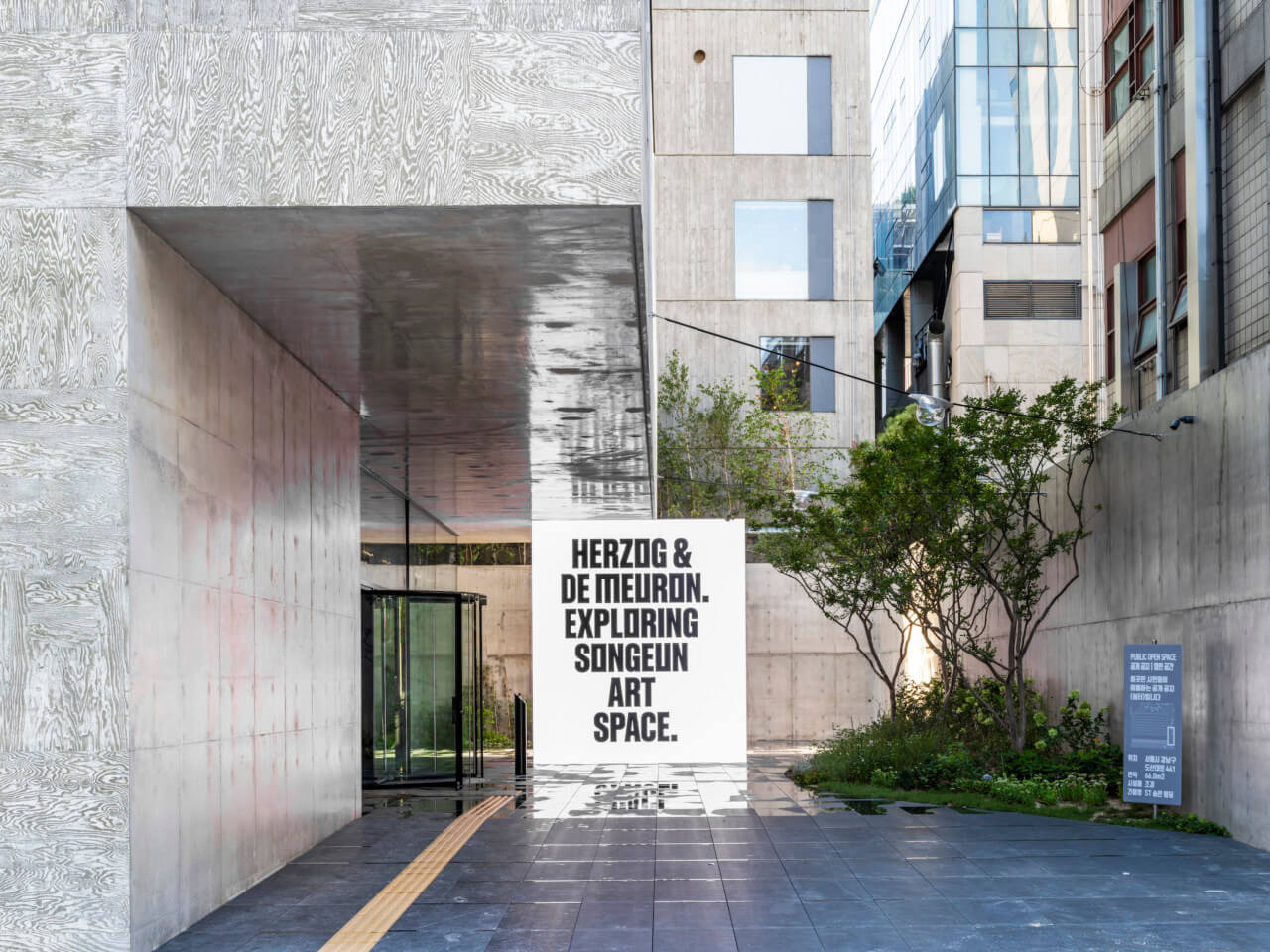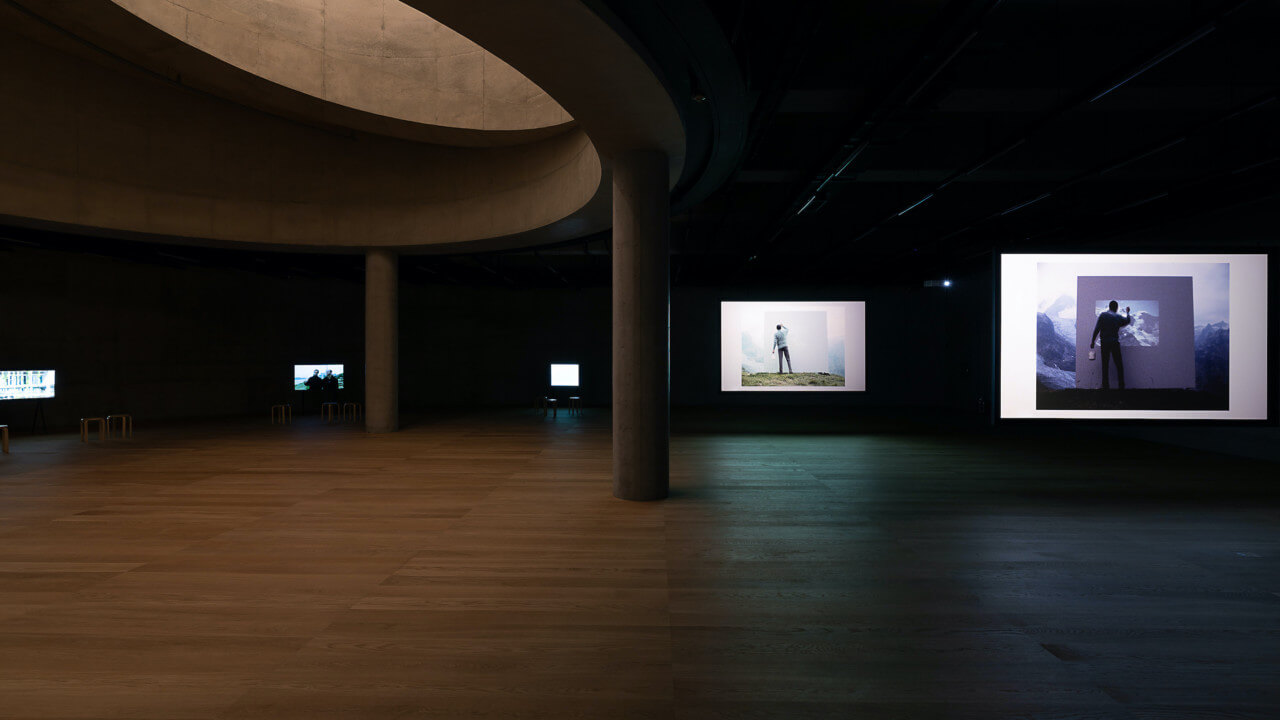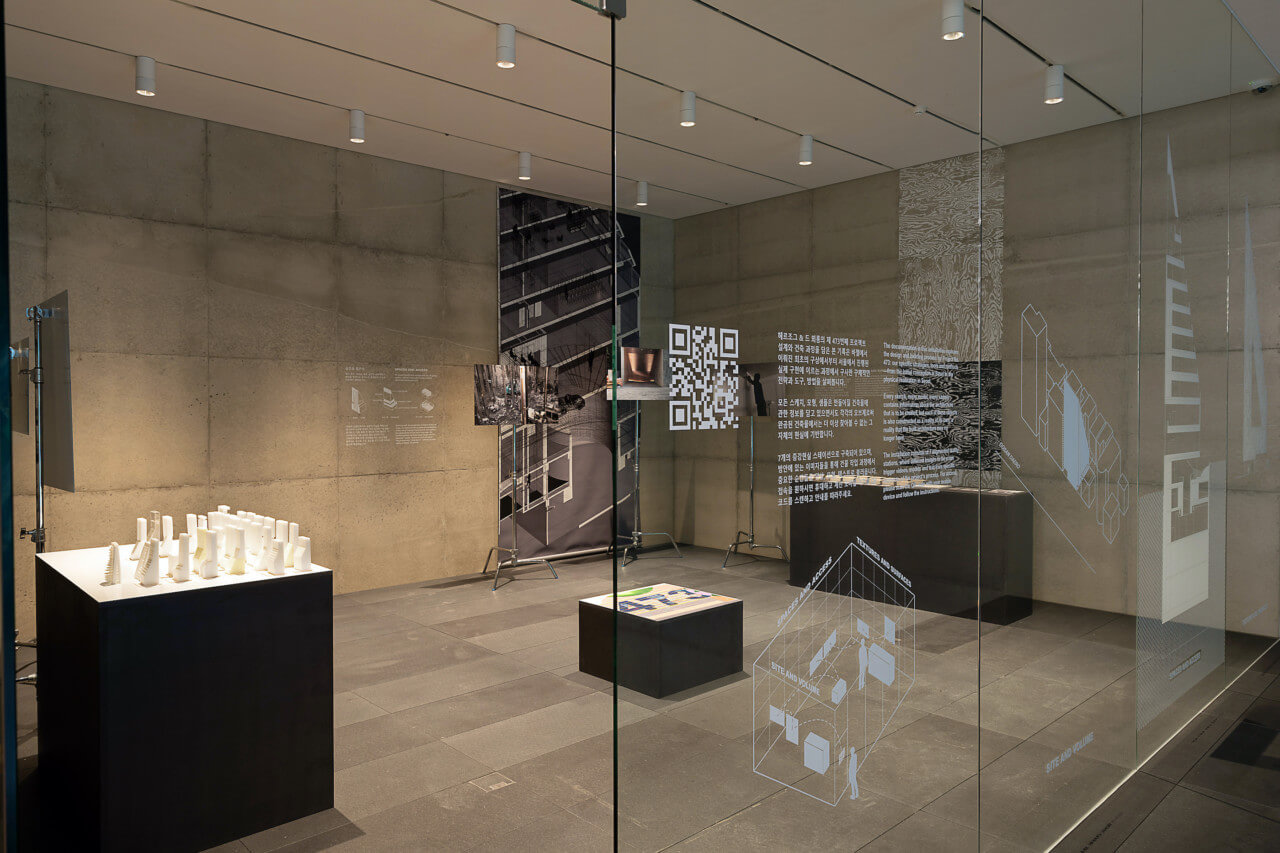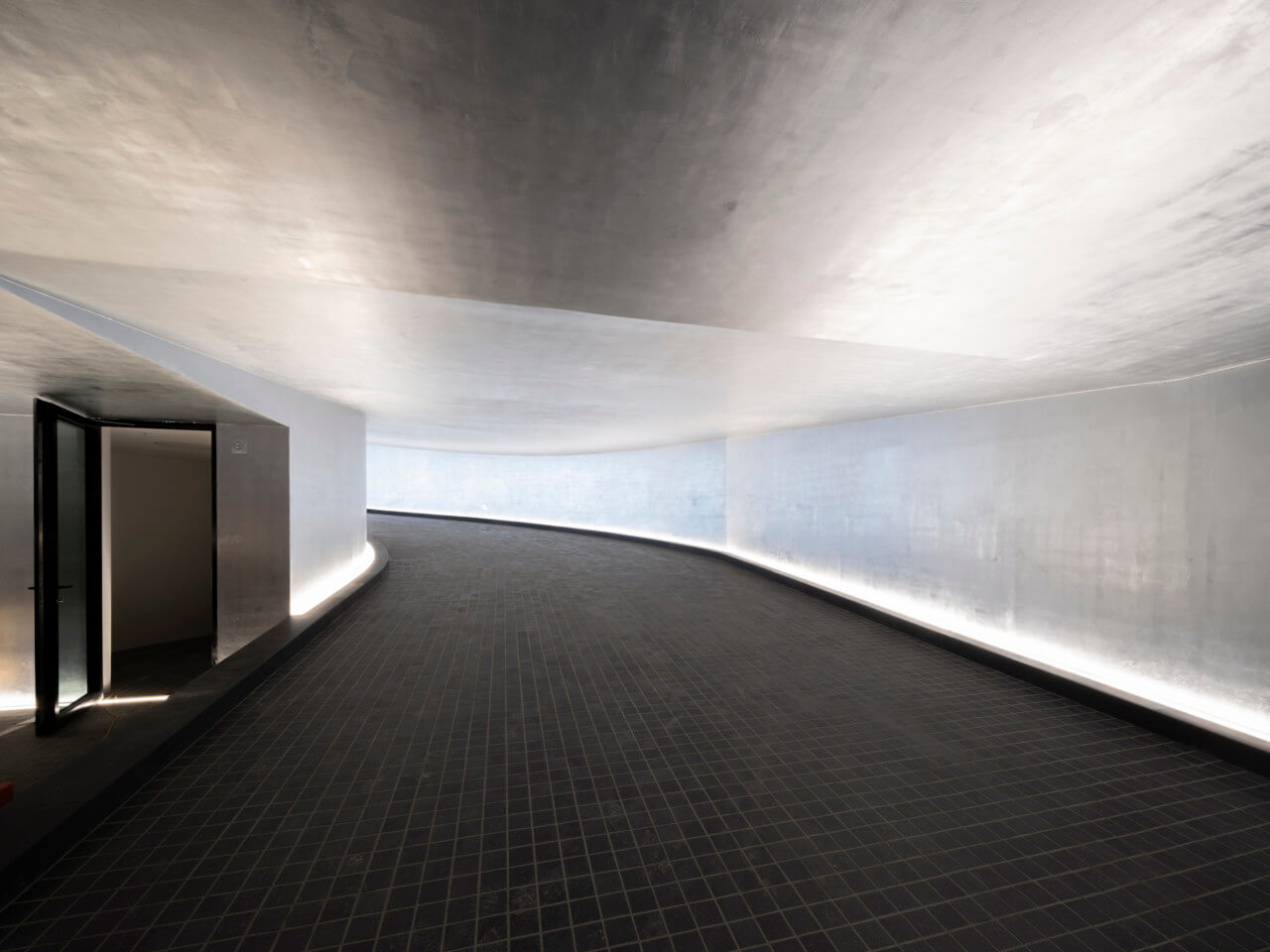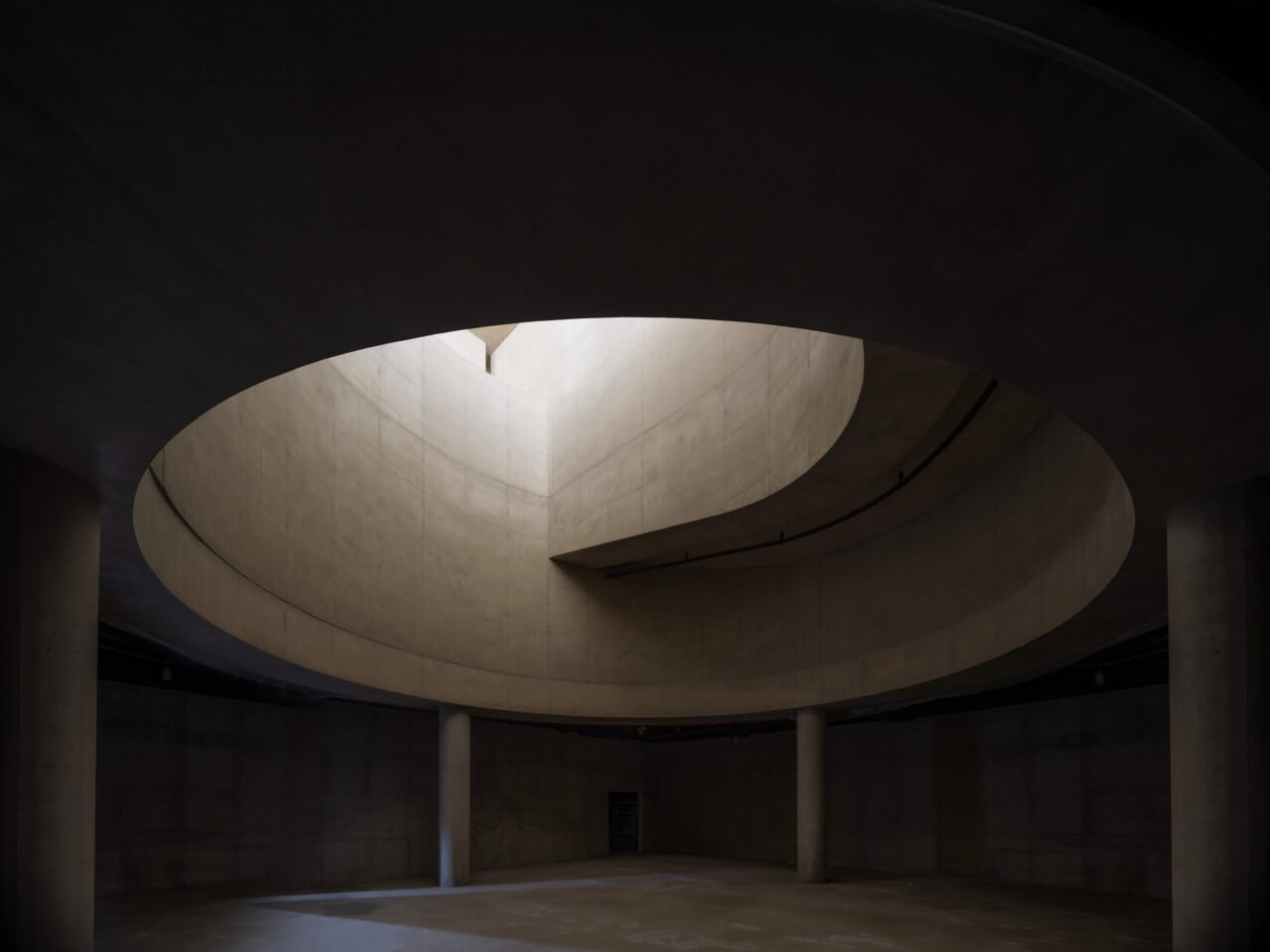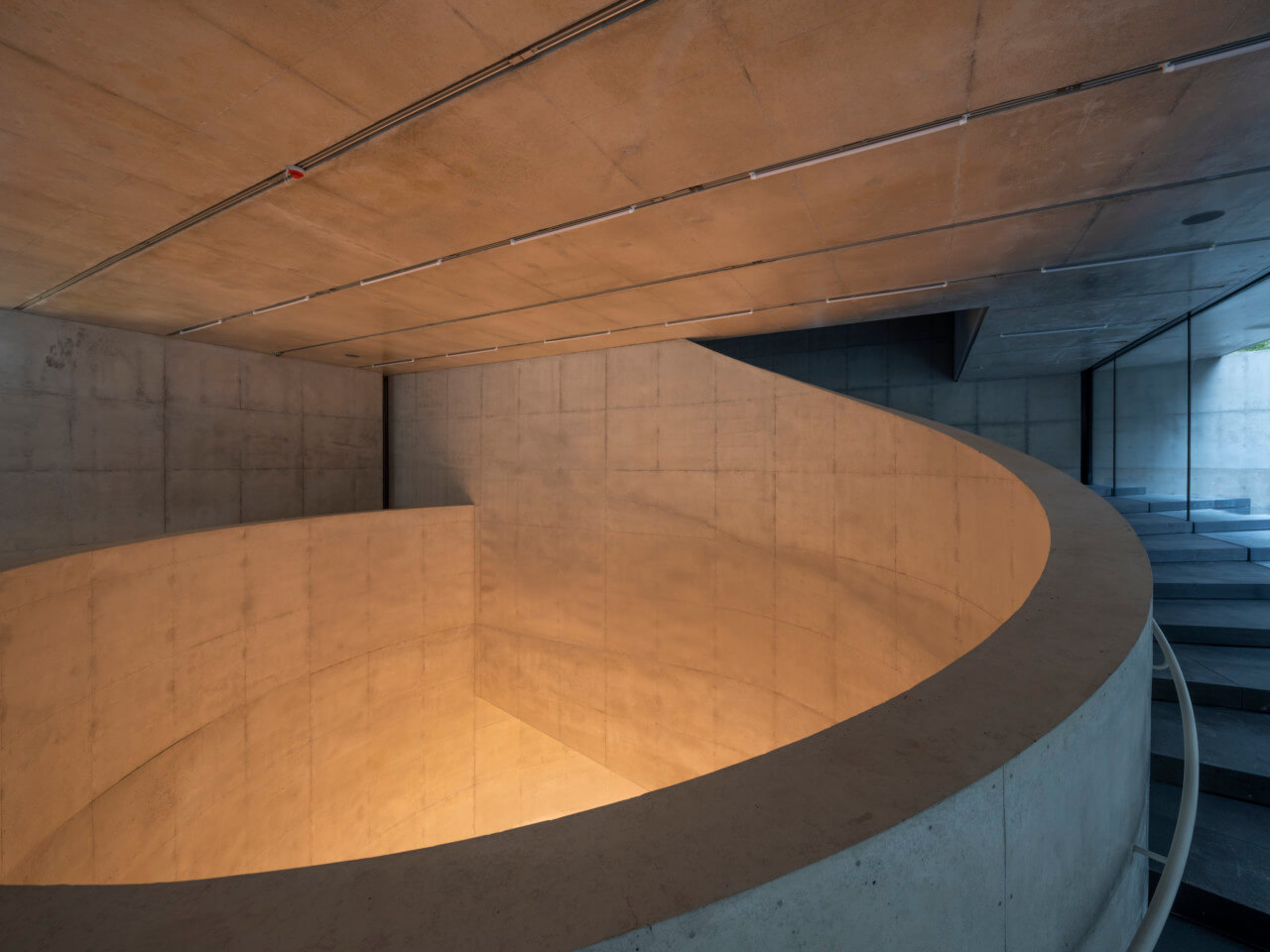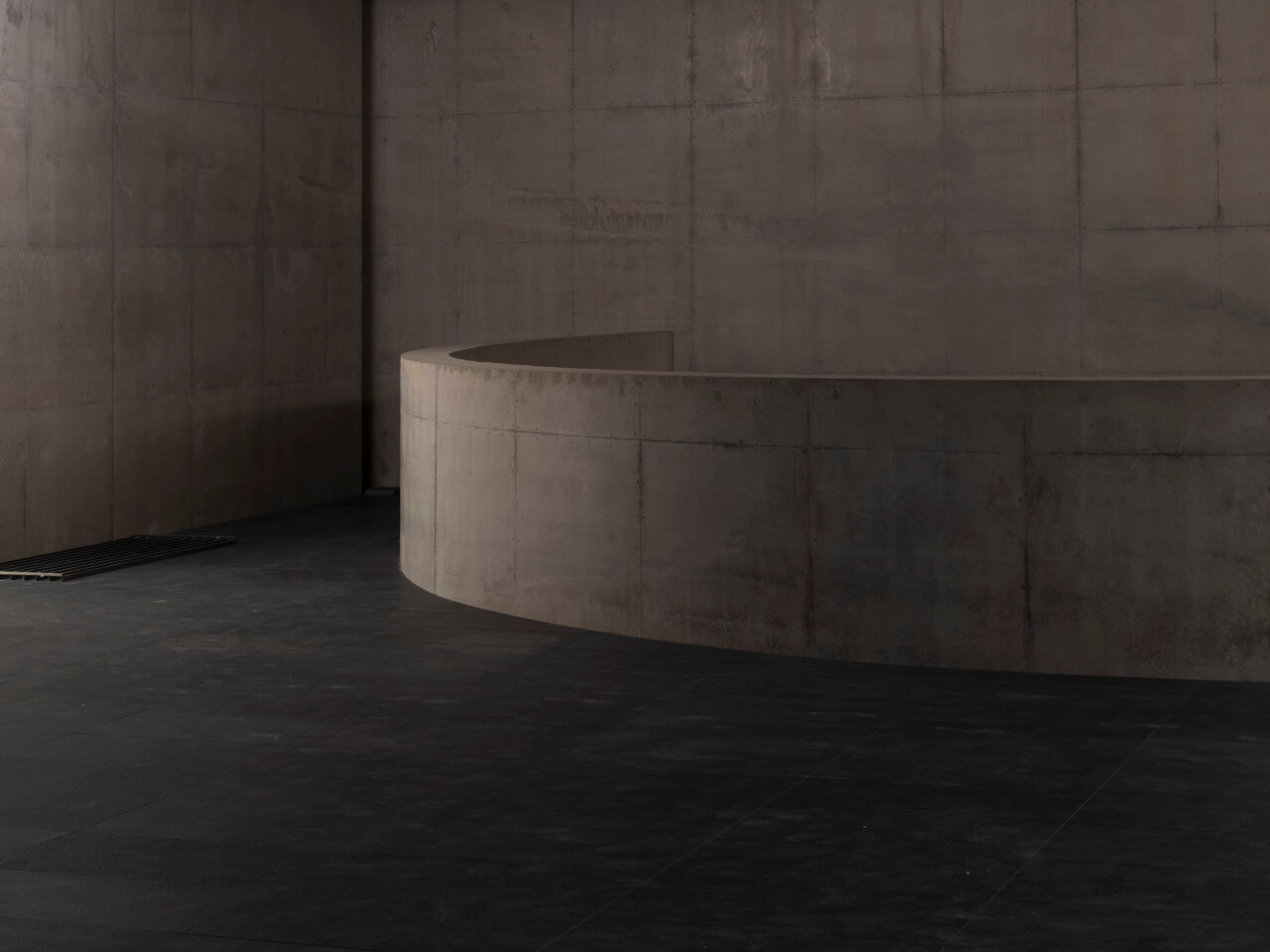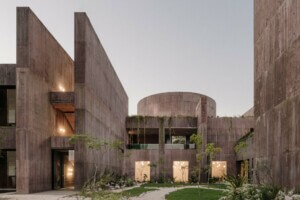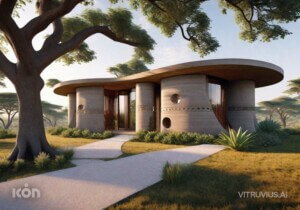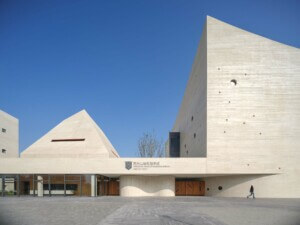The Seoul-based arts nonprofit SongEun Art and Cultural Foundation has opened its permanent new home at the monolithic, Herzog & de Meuron-designed ST SongEun Building. Although Herzog & de Meuron has realized a considerable number of projects across Asia, with Hong Kong’s M+ being a notable new addition to the portfolio, the ST SongEun Building marks the Swiss firm’s first completed project in Korea.
Rising 11 stories above the South Korean capital city’s Cheongdam-dong ward in the Gangnam District, the wedge-shaped concrete edifice’s lower floors (including several below ground) include an “experimental and unexpected” mix of non-commercial art studios, exhibition galleries, and publicly accessible cultural spaces that “continue the mission of the Foundation to support young talented artists in pursuit of becoming a hub of culture, creativity and inspiration, connecting the public with art through prolific exhibitions and programs,” per a press release. The roughly 86,000-square-building’s upper levels serve as the new headquarters for energy company ST International Corporation, whose late honorary chairman, Sung-Yeon Yoo, founded the company in 1989. In total, four floors of the building include exhibition space, two floors are dedicated to art storage, and six levels host office space for the Foundation and ST International. The sizable subterranean parking area spans three levels.

The inaugural special exhibition at the new arts hub, Herzog & de Meuron: Exploring SongEun Art Space, is, as described, dedicated largely to the building itself. As detailed by the nonprofit, “… it is fundamental to the exhibition that architectural spaces are opened to the public for the first time. The architecture itself is experienced among documentation from its design and building process: the specific strategies, tools and methods from the initial conception in Basel to the physical realization in Seoul.”
The exhibition also features past signature works by the Pritzker Prize-winning Herzog & de Meuron as well as artists that the firm has collaborated with, including Thomas Ruff and Rémy Zaugg. The exhibition display “follows the careful sequence of spaces and offers a stroll through indoor and outdoor areas, the galleries above and below ground. In anticipation of future possibilities, this exhibition explores the potential of hosting various artistic media in the building, from traditional hangings with paintings and photographs to newer and alternative formats such as video, projections, augmented reality, and even smell.”
Following this building-focused show, which opened on September 30 and closes on November 20, is the second part of the inaugural exhibition, a presentation of the (expanded) 21st edition of the annual SongEun ArtAward. That show commences December 10 and runs through February 12 of next year.

Inspired by “distinct elements of local context, cultures, and environments” according to SONGEUN, the building does indeed make for a worthy subject for a kick-off exhibition. As described by the architects, the monolithic structure’s “unified form maximizes the allotted floor area while exploring the sculptural potential” of the area’s zoning law that allows for higher-density buildings to be built along the predominately low-rise ward’s main commercial thoroughfare. The tall, hermetic, south-facing front facade towers over the street while “a low back facade faces the garden where a more intimate scale defines the surrounding neighborhood.” In contract to the continuous mass of board-formed concrete (save for a pair of slim vertical windows, one slicing through the upper half of the facade and other through the lower half) that defines the front of the building, the rear is nearly entirely glazed “behind a layer of balconies that bring light and air into the offices.”
Visitors enter the building and into the main lobby through a modest cut-out in the concrete volume marked by an LED screen-wrapped column—an “attractive lantern” per Herzog & de Meuron—that announces various exhibitions and goings-on to the street.
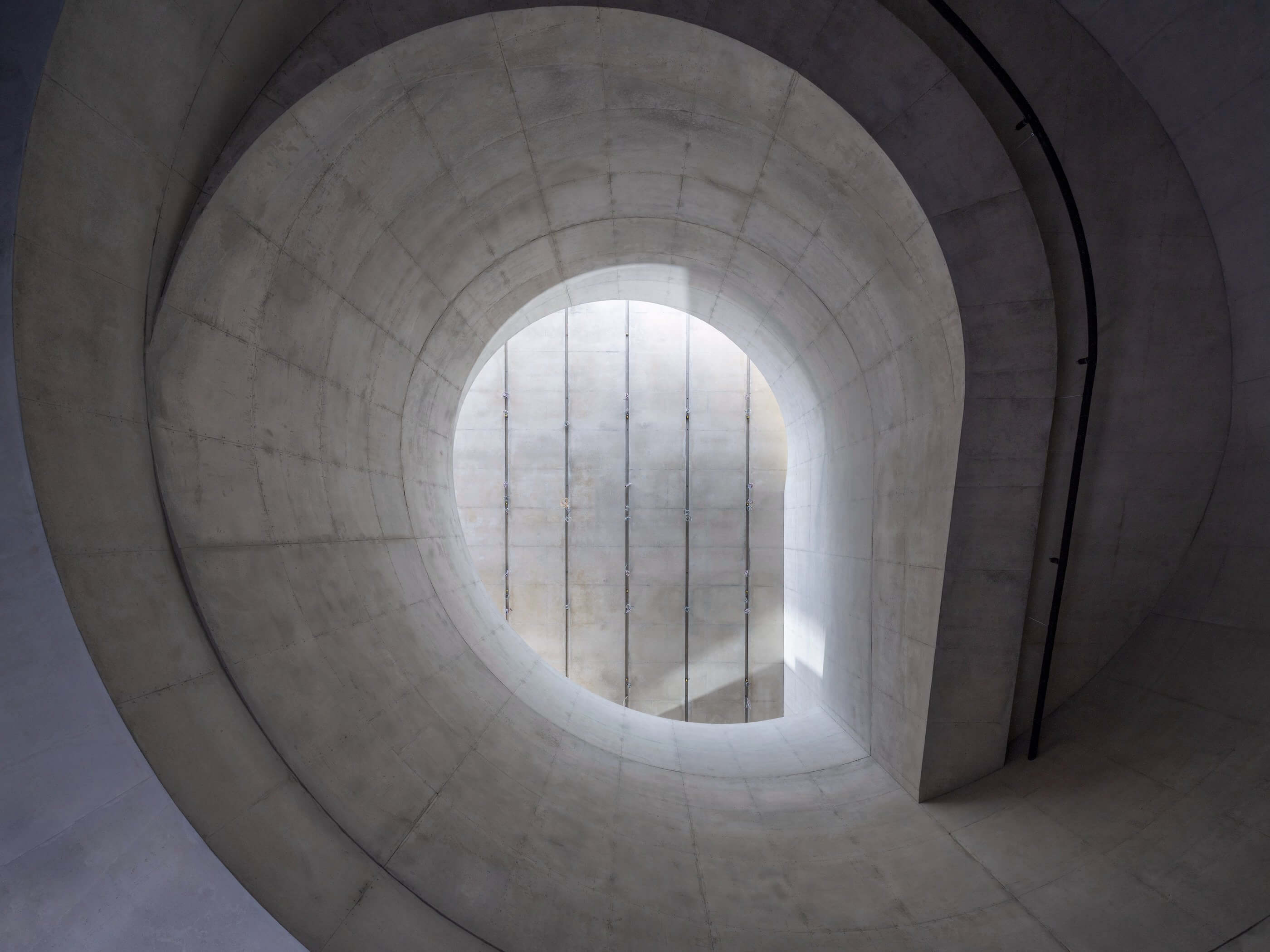
On the west side of the building is another street-level opening that leads to a car ramp. “The curve of the descending ramp carves an opening in the ceiling of the underground exhibition space, connecting this sunken gallery to the activity, sound, and light at street-level,” explained the architects. “With its concrete walls, this cave-like space contrasts with the reflective finishes of silver leaf lining the ramp’s interior and parking space beneath. The ramp spirals around a triple-height void and defines the geometry of the grand staircase which acts as both a threshold and auditorium space for screenings and lectures, leading to the second-floor galleries.”
While concrete dominates both the exterior and interior of the building, the facade features a wood grain pattern achieved through the rotation of larch plywood boards. “This unique texture invites the eye and hand to explore its different qualities, bringing the building’s urban presence down to a tactile human scale,” explained Herzog & de Meuron. The wood grain-imprinted concrete, in also providing the building with a textural quality, also references to the meaning of SongEun, which can be translated to “Hidden Pine Tree.”
Ground first broke on the ST SongEun Building in October 2018.






